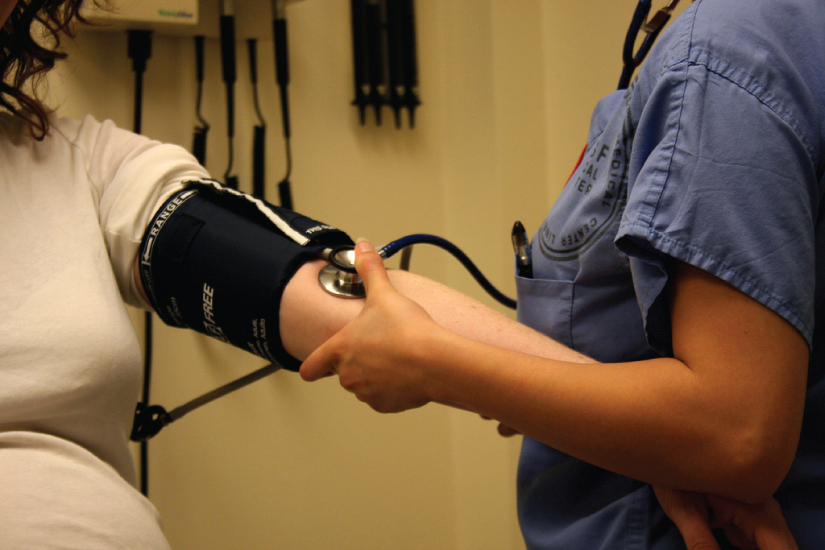
|

1.1 An introduction to the human body Read Online
1.2 The chemical level of organization Read Online

After studying this chapter, you will be able to:
Though you may approach a course in anatomy and physiology strictly as a requirement for your field of study, the knowledge you gain in this course will serve you well in many aspects of your life. An understanding of anatomy and physiology is not only fundamental to any career in the health professions, but it can also benefit your own health. Familiarity with the human body can help you make healthful choices and prompt you to take appropriate action when signs of illness arise. Your knowledge in this field will help you understand news about nutrition, medications, medical devices, and procedures and help you understand genetic or infectious diseases. At some point, everyone will have a problem with some aspect of his or her body and your knowledge can help you to be a better parent, spouse, partner, friend, colleague, or caregiver.
This chapter begins with an overview of anatomy and physiology and a preview of the body regions and functions. It then covers the characteristics of life and how the body works to maintain stable conditions. It introduces a set of standard terms for body structures and for planes and positions in the body that will serve as a foundation for more comprehensive information covered later in the text. It ends with examples of medical imaging used to see inside the living body.
Question: Systemic anaphylaxis results in all but which of the following?
Choices:
tacycardia
hypertension
bronchospasm
pruritis
pulmomary edema
Question: Which of the following is false regarding the thymus?
Choices:
Dogs keep thymus throughout life.
Organ where T cells undergo selection
The thymus is comprised of lobules divided into cortex and medulla
Thymus has very little immune response
Ruminants and pigs have a large thymus
Question: The marginal zone of the spleen is comprised of ________________.
Choices:
T cells forming an innate response to antigens
B Cells secreting antibodies
Macrophages phagocytizing antigens .
immature RBC's about to be released into periphery
This zone does not exist in the spleen... this question is trying to trick me but I am no fool!
Question: The PALS of the spleen are comprised of ___________ and are found in the _________pulp.
Choices:
T cells, red pulp
B cells, red pulp
T cells, white pulp
B cells, white pulp
Question: Which of the following is false regarding mast cells?
Choices:
mast cells release histamine which causes vasodilation and vascular permeability
Mast cells release substances that can cause bronchospasm.
Mast cells release IL-4 which is a cytokine for B cells to secrete IgE
Mast cells release coagulant proteins such as Heparin
Mast cells are involved in Type I hypersensitivity
Question: Transgenic mice are specifically inbred for different genetic traits. One such mouse, the B6.CB17-Prkdc mouse, is bred to be severely immune deficient with congenital hypoplasia of the thymus, spleen and lymph nodes. If you were to transfuse this animal with leukocytes, which two leukocytes would correct the deficiency?
Choices:
Mast Cells and Eosinphils
T cells and B Cells
Macrophages and B cells
B Cells and antigen presenting cells
Neutrophils and eosinphils
Question: How would you treat an animal with anaphylactic shock?
Choices:
Give Epinephrine to treat bronchospasm , rapid acting steroid for decrease mucus production and IV fluids for hypotension
Give Epinephrine to treat bronchospasm , Lassix for pulomnary hemorrhage and IV fluids for hypotension
IV fluids are good enough treatment alone
Perform CPR and then Give Lassix
Question: Which of the following is false regarding the thymus?
Choices:
Dogs keep thymus throughout life.
Organ where T cells undergo selection
The thymus is comprised of lobules divided into cortex and medulla
Thymus has very little immune response
Ruminants and pigs have a large thymus
Question: Aleutian disease in mink is caused by a chronic parvovirus infection that is characterized by persistent high viral titers. Mink eventually die from multi-organ failure due to systemic pyogranulomatous vasculitis that often includes specifically, glomerulonephritis. Which hypersensitivity response is most likely responsible for these lesions?
Choices:
Type I
Type II
Type III
Type IV
Question: A drug (such as penicillin) can cause a Type _____ hypersensitivity that is an IgE mediated immune response.
Choices:
I
II
III
IV
Question: A 13 year-old, castrated male Shetland pony comes to your practice for treatment of a contaminated and infected laceration on one fetlock. After attending to the wound you administer procaine penicillin intramuscular and place him in a stall to rest. Within 1 hour your technician finds the pony down with tachypnea, labored breathing and marked tachycardia. He is rapidly losing consciousness. What is the most likely cause of tachycardia?
Choices:
Systemic Vasodilation
Systemic Vascular leakage
Systemic Hypertension
Both 1 and 2 are correct